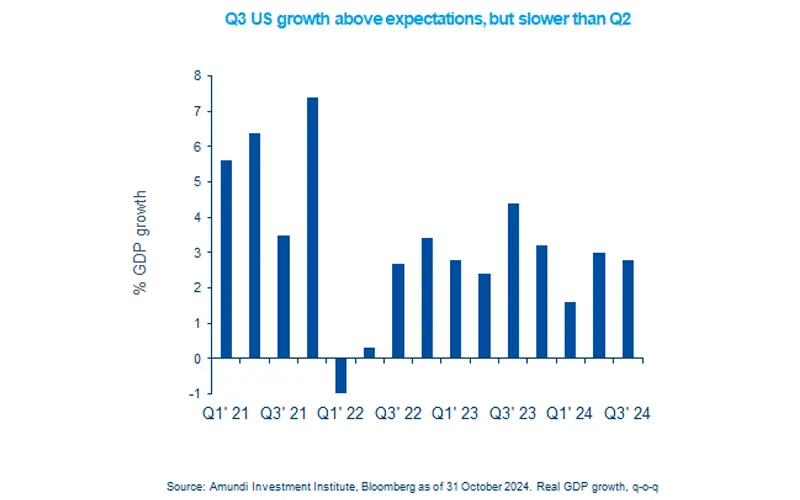Összegzés
Highlights
-
The US economy grew at a stronger than expected pace in the third quarter, but the pace was slower than Q2.
-
On inflation, although we may witness some volatility, the overall trajectory is declining, allowing the Fed to cut rates.
- Other central banks such as the ECB and the Bank of England are also likely to ease their policies.
In this edition
US real GDP (inflation-adjusted GDP) growth for the quarter ended 30 Sept. came in above expectations at 2.8%, driven by strong consumption. This was slightly below Q2 growth. Looking ahead, we think the case for a soft landing (mild deceleration) of the US economy is intact. As labour markets gradually weaken, wages may be affected and this could impact consumption. Another important factor for future US growth would be government spending. In fact, expectations on government spending and fiscal deficits (excess of income over expenses) have already caused sharp movements in bond yields. In addition, monetary policy, economic growth and inflation would collectively affect yields, not just in the US but also in Europe and the UK. We think as inflation continues to fall, central banks could ease monetary policies and that it may support bonds in select geographies.

Key dates
US ISM, Indonesia GDP, South Korea CPI
EZ PPI, Brazil monetary policy
FOMC decision, Germany and China trade balance
Read more

